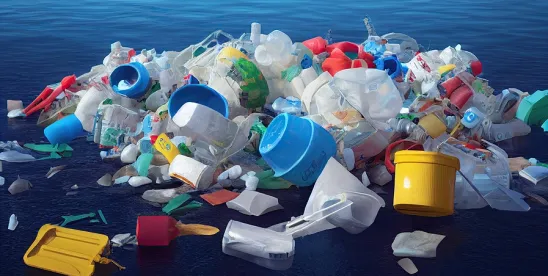In 2021 the Environmental Protection Agency (“EPA”) issued its strategic roadmap to address a broad group of thousands of manmade chemicals known as per- and polyfluoroalkyl substances (“PFAS”), pledging to use “every tool in the toolbox” to address the chemicals. So far in 2024, EPA has taken a number of steps to execute on the goals of its 2021 roadmap. Among those steps were finalizing designation of certain PFAS as “hazardous substances,” finalizing standards for a number of PFAS in drinking water, issuing interim guidance for PFAS disposal methods, and proposing a rule for defining certain PFAS as “hazardous constituents”. The breadth of EPA’s rules and guidance is far reaching as the manufacture and use of PFAS are not limited to small or discrete sectors of regulated industry, rather PFAS have been used in a wide variety of industries. The imposition of restrictions and limits on PFAS are likely to have broad implications for manufacturers all along the supply chain.
Two PFAS Chemicals Designated as Hazardous Substances Under CERCLA
In April 2024, the EPA issued a final rule designating two PFAS, perfluorooctanoic acid (“PFOA”) and perfluorooctanesulfonic acid (“PFOS”), as “hazardous substances” under the Comprehensive Environmental Response, Compensation, and Liability Act (“CERCLA”). Industry groups have filed challenges to portions of the rule which are currently pending in court; however, the rule went into effect on July 8, 2024 as those challenges proceed.
Designating PFOA and PFOS as hazardous substances triggers numerous requirements. The primary impact of the rule is that it incorporates PFOS and PFOA into CERCLA’s strict, joint and several liability framework. This change grants EPA the power to investigate releases of PFOA and PFOS and compel potentially responsible parties (“PRPs”), including owners and operators of a property or facility, to remediate releases of PFOA and PFOS through the specific CERCLA enforcement provisions. This could lead to large costs for manufacturers tasked with cleaning up existing and historic sites. Private parties may now also take action under CERCLA to pursue cost recovery and contribution actions.
In addition, there are new immediate reporting requirements if PFOS or PFOA releases from a facility exceed a designated “reportable quantity” (one pound within 24 hours). If the release exceeds this quantity, the responsible party must report to the National Response Center and relevant state or tribal authorities. Also, because many states include CERCLA hazardous substances under their cleanup statutes, designating PFOA and PFOS as hazardous substances may provide states the authority to require remediation under their own individual state laws.
Finally, the designation of PFOA and PFOS under CERCLA requires the U.S. Department of Transportation to classify these substances as hazardous materials for purposes of transport under the Hazardous Materials Regulations. Overall, the rule will likely have significant implications for closed and current remediation sites as well as regulated parties’ current release reporting procedures and policies and transportation requirements.
EPA Issues Regulation Addressing PFAS Contamination in Public Water Systems
In April 2024, EPA also issued its first national drinking water regulation to limit PFAS contamination in drinking water. The rule establishes enforceable Maximum Contaminant Levels (“MCLs”) for six PFAS[1] that have been identified in drinking water. The rule sets the MCL for the specific set of PFAS at 4 nanograms per liter or parts per trillion (“ppt”) for PFOS and PFOA and includes 10 ppt for four additional PFAS compounds.
The immediate impact of the rule is that public water systems must test and monitor for the identified PFAS by 2027. The regulation requires public water systems to release public information on PFAS levels in drinking water beginning in 2027. Additionally, public water systems have until 2029 to decrease PFAS levels if monitoring shows the levels exceed the applicable MCL. Beginning in 2029, public water systems must remediate PFAS contamination if they are in violation of one or more of the established MCLs and the system must provide notification to the public of such a violation.
In the short term, these standards will set compliance obligations and impose significant costs on public drinking water utilities. In the longer term, the new standards may create a basis for states or EPA to attempt to establish very conservative maximum PFAS concentrations for discharges that have the potential to impact drinking water sources, including groundwater and surface water discharge standards, which will in turn impact facility stormwater and wastewater permitting.
EPA Issues Interim Guidance on the Destruction and Disposal of PFAS and PFAS-Containing Materials
On April 8, 2024, EPA issued revised interim guidance on the destruction and disposal of PFAS and PFAS-containing materials. This guidance is the second of its type, as EPA issued an initial guidance in 2020 as required by the National Defense Authorization Act (“NDAA”). The NDAA directs EPA to address the storage, disposal, and destruction of PFAS and PFAS-containing materials and requires EPA to review and update its guidance periodically. The new guidance retains three established technologies from the 2020 initial guidance that can destroy PFAS or control PFAS release into the environment: thermal destruction (high heat treatment), landfilling, and underground deep well injection. The guidance raises associated uncertainties and key data gaps that EPA has indicated require additional research and evaluation.
The guidance aims to provide decision-makers with information allowing for identification of the most effective destruction, disposal, or storage method of PFAS-containing materials and waste. EPA does not make recommendations but urges decision-makers to consider all available factors and data to minimize PFAS release and contamination in the destruction and/or disposal process. Included in the guidance are modern technology evaluation frameworks allowing decision-makers to assess emerging innovative destruction and disposal methods. Overall, the guidance acts as a reference point and encourages decision-makers to prioritize disposal, destruction or storage methods that have a low potential for PFAS release into the environment, but this second interim guidance continues to leave open EPA’s specific position on the preferred disposal methods pending additional research. As a result, regulated parties are still generally on their own in predicting and evaluating the potential risks associated with a particular disposal method for PFAS and PFAS-containing materials.
EPA Proposal Seeks to Regulate Nine PFAS as Hazardous Constituents under RCRA
On February 8, 2024, EPA published two proposed rules designed to provide EPA enforcement power to clean up PFAS contamination under the Resource Conservation and Recovery Act (“RCRA”). These rules, if adopted, would list nine PFAS[2] as “hazardous constituents” under RCRA.
If finalized, the rules will expand EPA’s ability to require PFAS cleanup at sites that are subject to RCRA jurisdiction. While listing the nine specific PFAS as “hazardous constituents” does not make these specific PFAS “hazardous wastes” under RCRA, EPA may use this “hazardous constituents” designation to support a later “hazardous waste” classification. Even though the proposal does not classify the specified PFAS as hazardous waste, the rule would still allow EPA to require cleanup under the RCRA corrective action requirements.
The second proposal issued would broaden the definition of “hazardous waste” during cleanups at waste facilities. According to EPA, this proposed rule would harmonize the regulations with the statutory definition of “hazardous waste.” If this rule is adopted, there could be stricter and potentially more expensive cleanup requirements for PFAS and other emerging contaminants at RCRA corrective action sites. These proposed rules would expand the cleanup obligations at existing sites managed under RCRA corrective action orders and provide the EPA authority to issue new corrective action orders to address these nine PFAS or any emerging contaminants.
Looking Forward
The rules and guidance previewed above are just a handful of the actions EPA has taken to date to address PFAS and we expect additional proposals to continue to be developed and implemented. In addition to its 2021 strategic roadmap, EPA has made PFAS an enumerated initiative in its National Enforcement and Compliance Initiatives for the 2024 to 2027 review cycle. We anticipate that EPA will continue to issue specific proposals aimed at PFAS in addition to pursuing cleanup actions and enforcement under its newly finalized rules. The scope of these rules and proposals not only affect historic and current cleanup sites, but also the transport and release of PFAS from current facilities, which will have broad implications for manufacturers throughout the supply chain.
Special thanks to Noah Koleske, a summer associate in Foley’s Milwaukee office, for his contributions to this article.
[1] The specific PFAS include five individual PFAS: PFOA, PFOS, PFNA, PFHxS, and HFPO-DA. Further, the EPA is including a mixture of two or more of four PFAS: PFNA, PFHxS, HFPO-DA, and PFBS.
[2] The nine specific PFAS proposed for listing are: (1) PFOA, (2) PFOS, (3) PFBS, (4) HFPO-DA or GenX, (5) PFNA, (6), PFHxS, (7) PFDA, (8) PFHxA, and (9), PFBA.




 />i
/>i

